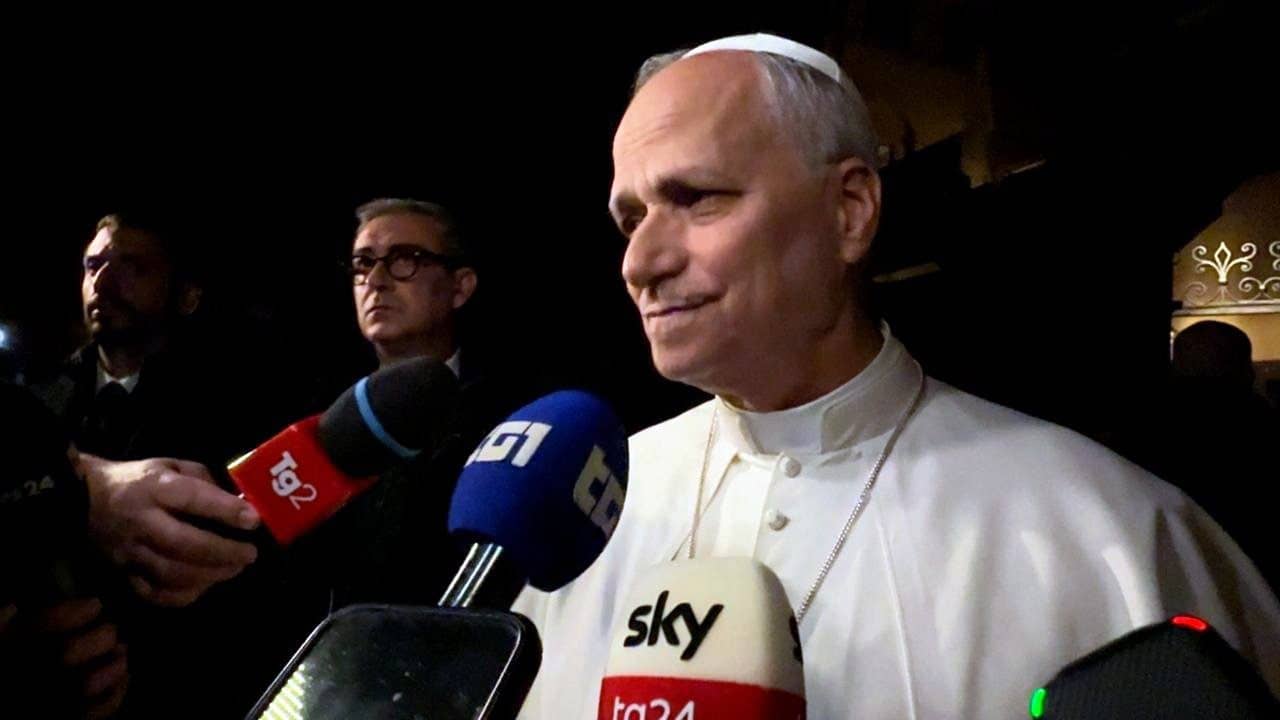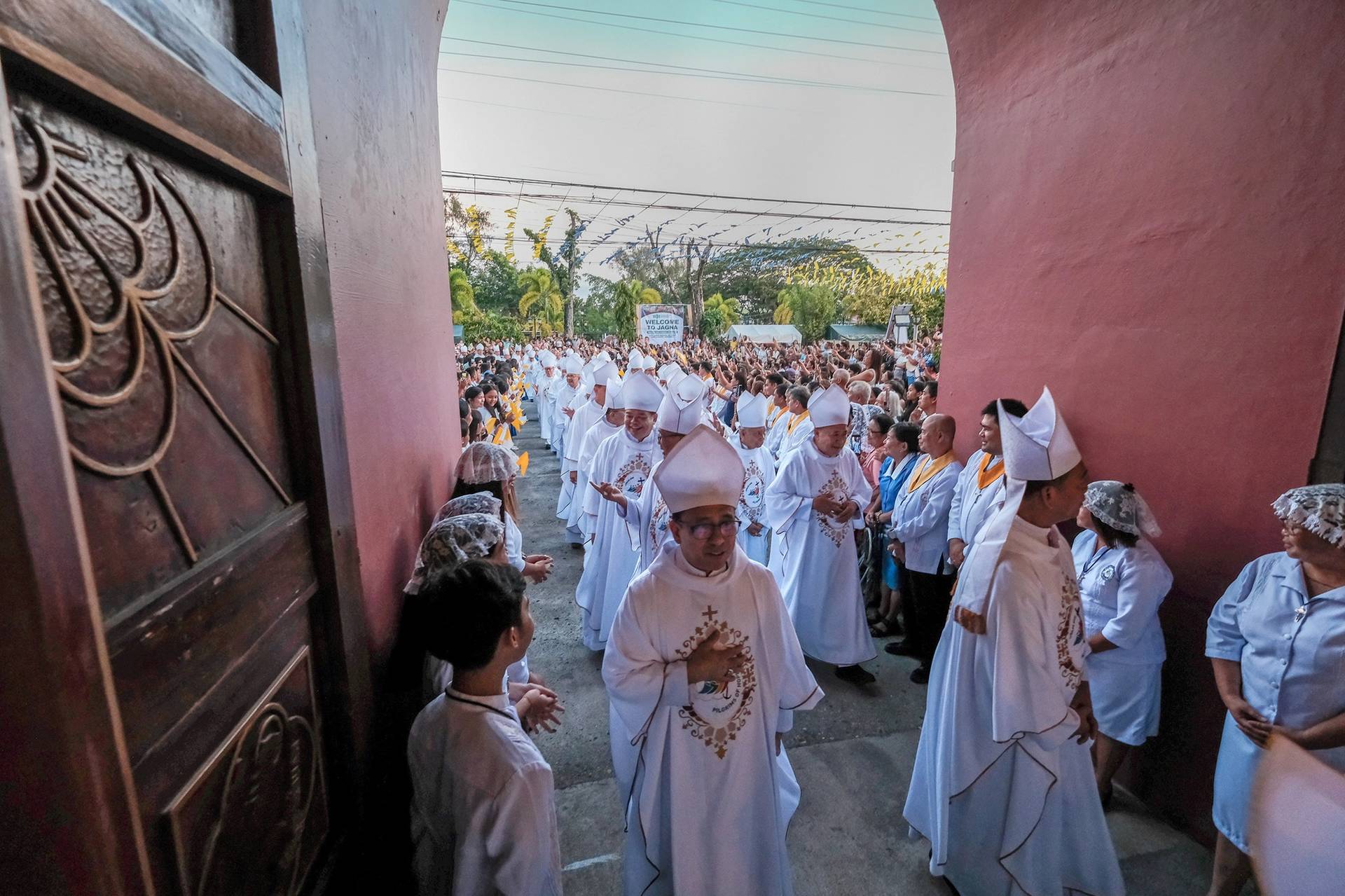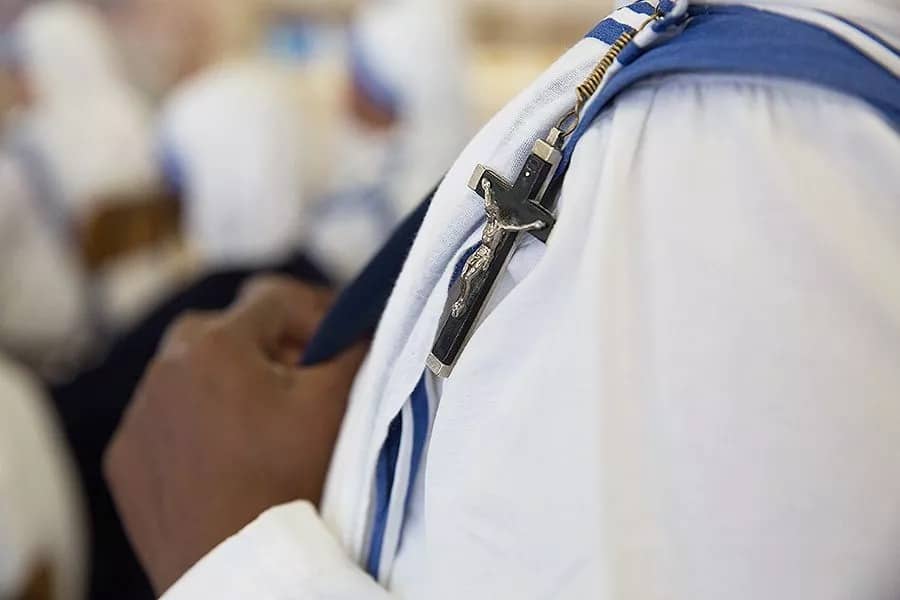Cardinal Luis Antonio Tagle of Manila is in the spotlight this week as Pope Francis visits the Philippines. Last March, Crux associate editor John L. Allen Jr. traveled to Manila to give a talk to mark the 50th anniversary of Divine Word Seminary in Tagaytay City and for a dinner event with Tagle. In between, he sat with Tagle for an interview.
Before last year’s papal election, Cardinal Luis Antonio Tagle of Manila was known as the face of a distinctly Asian form of Catholicism. He rejects ostentation in dress and manner, preferring to be called by his nickname “Chito” rather than formal titles. He emphasizes the need for the Church to listen as much as it talks, and he exudes a sort of slow-burn charisma that doesn’t smack you in the face so much as it gradually envelops you.
Today, there’s an easier way to say all that: He’s the Asian Pope Francis.
Francis clearly likes what he sees in the popular Philippine prelate, who at 56 is the fourth-youngest cardinal in the world. The pope recently appointed Tagle one of three co-presidents for a critically important summit of bishops in the fall. Francis also reaches out informally.
Tagle tells a story about forgetting to turn off his cellphone while saying Mass recently and then ignoring a call, only to realize later it had been the pope.
The parallels between the two men are striking.
Before taking over in Manila in 2011, Tagle served as bishop of the smaller Philippine diocese of Imus, where he was famous for not owning a car, preferring to either walk or to hop on one of the cheap minibuses known as a “jeepneys” that working-class Filipinos use to move around. He was also renowned for inviting beggars in the square outside his cathedral to eat with him.
Like Francis, Tagle has a big pastor’s heart. We spoke about the estimated 10 million Filipinos who have left the country to work overseas, often trying to escape grinding poverty, and his anguish was palpable.
“Knowing the Filipino psyche, I know they’re suffering being away from family, from home,” Tagle said. “In a way, it’s a form of forced migration.”
Tagle said he dreads going to Manila International Airport for precisely this reason.
“Every time I fly out, I see these gut-wrenching goodbyes at the gate,” he said. “It tears your heart out.”
In another parallel with Francis, Tagle is a moderate who prefers seeking compromise to bringing down fire and brimstone.
“Many people have told me in the past that I’m not strong enough, that I don’t condemn enough,” Tagle said, adding that the new pope’s example has helped resolve any doubts he once felt.
“Now I hear the pope saying, ‘I’m a son of the Church, I know the teachings of the Church, but why should I condemn anyone?’ ” Tagle said, citing Francis’ instantly classic line on gays, “Who am I to judge?”
In the Philippines, one flashpoint raising questions about how hard a line Catholic leaders should take has been a bitterly debated Reproductive Health Law, which requires the government to make contraception widely available.
Though Tagle took a clear stand against the bill, he was criticized by some for not pushing harder. When a Philippine bishop threatened the country’s president with excommunication, Tagle didn’t join the fray.
When Catholic activists targeted backers of the law for defeat by labeling them “Team Death,” Tagle declined to put up attack-ad posters in Manila churches.
That nuanced stance does not square with some Filipinos’ sense of how a top cleric should behave.
One such person came up to me last week and said the law would never have passed if the legendarily tough Cardinal Jaime Sin, who was key to the People Power uprising that swept Ferdinand Marcos from power in 1986, were still around. (Sin died in 2005.)
Tagle’s moderate streak is also clear on internal Church questions.
In his interview, he said that he’s open to considering the arguments for allowing Catholics who divorce and remarry without an annulment, a declaration from a Church court that the first marriage was invalid, to receive Communion and the other sacraments.
“We have a principle we have to believe in,” he said, referring to the idea that marriage is for life. “But the openness comes on pastoral judgments you have to make in concrete situations, because no two cases are alike.”
One can debate the merits of those positions, but there’s no question Tagle and leaders who think like him appear strengthened in their convictions one year into the new regime.
If you’re looking for a “Francis effect,” in other words, that’s one way to gauge it.
The risks of importing priests
In Catholic circles, it’s common to say the Filipinos are the new Irish. The reference is to the waves of Irish immigrants in the 19th century who carried the faith with them abroad, as well as droves of Irish missionary priests who founded churches in a staggering range of locales from Africa to Asia and beyond.
Today, Filipinos play much the same role.
Pick a diocese almost anywhere today, and you’ll likely find that some of the most dynamic Catholic energy bubbles in its Philippine community. Philippine priests also have become the Church’s backbone in a growing number of places. Tagle says the Philippines has about 7,000 Catholic priests in the country, but there are at least a thousand more serving abroad.
While Filipinos are celebrated for those contributions, there’s a shadow side to the growing reliance in Europe and North America on importing priests from places such as the Philippines. In a nutshell, it’s that the numbers say those priests from the developing world are much more badly needed at home.
In the United States, the priest-to-Catholic ratio is about 1 to 1,300, while in Latin America it’s closer to 1 to 7,100 and in Southeast Asia it’s 1 to 5,300. The result is that priests in the developing world often shoulder staggering workloads. Tagle said that on the first Sunday after his ordination in 1982 he had to say nine Masses, and that’s not uncommon in the Philippines.
The risk of a creeping movement of clergy from south to north is that wealthy Catholic communities are fueling a “brain drain” at the expense of poorer churches, in a way that’s harmful to global Catholic interests. At the moment, two-thirds of the world’s Catholic population lives in the southern hemisphere, but two-thirds of its priests are in the north, an imbalance that seems destined to grow.
Tagle said he’s aware of the danger, and it’s one reason why he never takes money in exchange for sending a priest abroad — because, he said, he doesn’t want to get “hooked.”
Tagle was referring to the fact that bishops in Europe and North America sometimes give financial support to dioceses or religious orders in the developing world when they release a priest. Those priests also sometimes send a portion of their earnings back home, and they’re sometimes able to solicit donations for their home church during annual missionary appeals. As a result, sending a priest overseas can be an important revenue stream, and Tagle acknowledged that it’s easy for bishops in poor countries to become dependent on it.
“That’s a real temptation,” he said.
Tagle said he also carefully screens priests who ask to be sent overseas, wanting to be sure their intentions are pure.
“I’m very particular about who will be sent,” he said. “We don’t just send anybody who expresses a desire to go, and who packages that desire in a very convincing way.”
At the end of the day, however, Tagle said that something his first bishop in Imus told him remains his guiding principle.
“You don’t wait to become rich to share,” he quoted the bishop as saying. “In your poverty, you share.”
Tagle also made a more practical observation.
“We should realize that even if the number of priests in the southern hemisphere is small, they’re generally quite young,” he said. “Even if we send one or two outside, maybe the amount of work is more bearable by the younger guys.”
Finally, Tagle hinted, a willingness to share may yield surprising results. He noted that when he left the Imus diocese in 2012, the total number of priests had grown from 27 to 121 despite the habit of occasionally dispatching clergy overseas.
Referring to the idea that God will provide, Tagle pointed to that experience in Imus and laughed, “It sort of works.”
Catholic saturation in the Philippines
As a footnote, I already had a soft spot for the Philippines before arriving this week, but I came away just wildly pro-Philippines.
We’re talking about one of the most Catholicism-saturated cultures on earth, up there with Italy, Ireland, Poland, and Mexico, and arguably the one in which the Church is still, to the greatest extent, a force in daily life.
Consider that shopping malls and office buildings in the Philippines generally have chapels where several daily Masses are celebrated, and that it’s common to see road signs on downtown streets that read, “Caution: Masses and prayers always underway.”
As a result, the Filipinos I met last week seemed to have an almost boundless curiosity about Church affairs. They’re in no way naive — they’re as eager to dissect the latest scandals and controversies as anyone else, and they’re perfectly willing to ask hard questions about various aspects of Catholic teaching and practice.
What lies beneath, however, is a belief that when it’s hitting on all cylinders, the Church is a force for good. Given the People Power revolution, it’s a conviction that reflects national experience.
Because of all this, the Philippines may be the only spot on the planet where a visiting journalist specialized in Catholic affairs has a shot of being treated like a celebrity.
I’ve never posed for more photos in any 48-hour span of my life than I did on Wednesday and Thursday in Manila. I’ve never done longer segments on a country’s most-watched news shows, and I’ve certainly never been the featured attraction at a press conference that drew a packed house and where, at the end, journalists actually applauded. In general, I’ve never met ordinary people who seemed so thrilled to have a commentator on the Vatican and the papacy among them.
Granted, some of this was just classic Asian politeness and hospitality, but that didn’t feel like the whole story.
Despite its pervasive Catholic ethos, the Philippines doesn’t really have any equivalent of what the Italians call the vaticanisti, meaning journalists specialized on the Vatican beat, perhaps because it’s about as far away from Rome as it’s physically possible to be. Despite that handicap, I suspect the first real Filipino vaticanista will be an absolute rock star.
For somebody in my line of work, in other words, the Philippines is a terrific place, and I don’t mind saying I had a blast.














